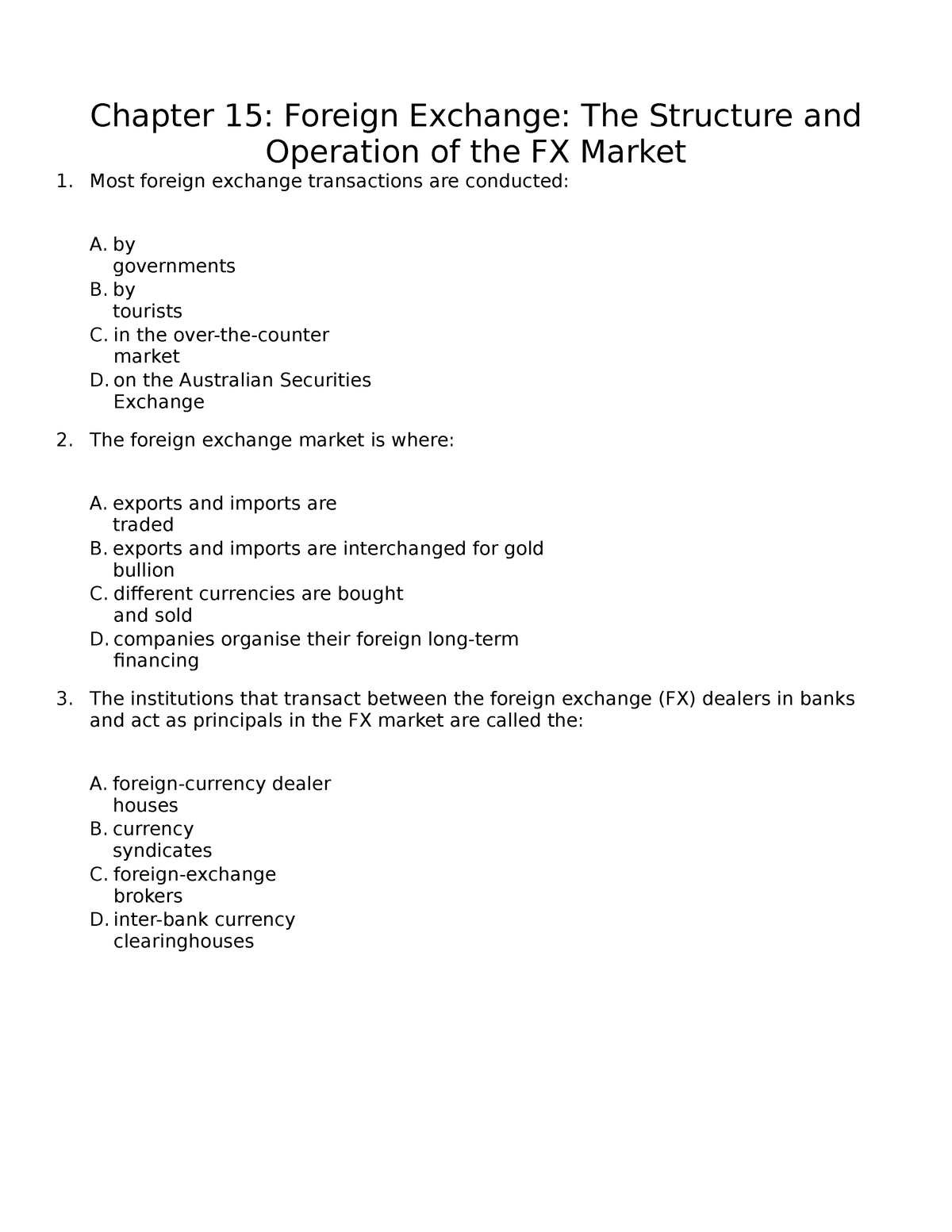
In this article we will cover the basics of forex trading. The basics of forex trading will be covered, such as the different currency pairs, market structure, and how MetaTrader 4 is used to trade. We'll also cover how to spot similar opportunities within the market. We hope by the end you'll feel confident enough to jump in and get trading started.
Basic principles of forex trading
Understanding how currencies interact and move is crucial for Forex investment. This knowledge is essential for success in Forex trading. There are two types of analysis that you can use to trade Forex. These methods are known as technical and fundamental analysis. Learning both can give you a competitive advantage.
Focus on just a few currency pairs while you learn the basics. There are four major currencies: EUR-USD (USD), GBP–USD, USD–CHF, USD-USD, USD–CHF, USD–USD, AUD–USD, and USD–JPY. You need to be able limit your losses, especially if you are just starting out.

Currency pairs
Currency pairs are a relatively simple concept. They represent the exchange rate between two currencies. One currency is known as the base currency while the other is known as the quote currency. Traders can earn a profit by accurately forecasting how much one currency would appreciate or decline against the other. There are many currency pairs that you can trade. There are many currency pairs that you can trade, including the British Pound against US Dollars, Euro against Japanese Yoens, and US Dollar against British Pounds.
The bid price and the offer price are used to quote currency pairs. The bid price is the price at which the forex broker is willing to buy the base currency from you, and the ask price is the price at which they are willing to sell it.
MetaTrader 4 platform
MetaTrader 4 allows you to trade forex. To do so, download MetaTrader 4 and create a trading account. After you have registered, you can use MetaTrader 4's Order window to place your initial trade. This window allows you to instantly place an order in market. Click on 'New Window in MT4' to open the Order Window. To close the window, choose a currency pair or press F9.
You will need to open an account with a broker that offers MetaTrader 4, as there are many of them out there. Review broker reviews to find the right broker for you.

Identifying similar markets
When it comes to forex markets, timing is everything. Even though there will be ups or downs in the price of forex before a trend continues, it's important to know when to purchase and when to sell. Traders should avoid selling at key support points and buying at tops. They want to be in the market at the best moment for the trend to continue.
Create a trading plan
It is important to establish a trading program before you trade in foreign exchange markets. It will help you to stay organized and focused, as well as keep your losses under control. As with any type of trading plan, you should include money management criteria.
A trading plan can help you keep track of your goals and objectives. You will be able to avoid making sudden decisions. A plan can help you trade more confidently, and with less emotional involvement.
FAQ
What is security in the stock market?
Security is an asset that generates income. The most common type of security is shares in companies.
Different types of securities can be issued by a company, including bonds, preferred stock, and common stock.
The earnings per share (EPS), and the dividends paid by the company determine the value of a share.
When you buy a share, you own part of the business and have a claim on future profits. If the company pays a payout, you get money from them.
You can always sell your shares.
How does Inflation affect the Stock Market?
Inflation is a factor that affects the stock market. Investors need to pay less annually for goods and services. As prices rise, stocks fall. That's why you should always buy shares when they're cheap.
What are the advantages of investing through a mutual fund?
-
Low cost - purchasing shares directly from the company is expensive. Buying shares through a mutual fund is cheaper.
-
Diversification - most mutual funds contain a variety of different securities. The value of one security type will drop, while the value of others will rise.
-
Professional management - professional managers make sure that the fund invests only in those securities that are appropriate for its objectives.
-
Liquidity - mutual funds offer ready access to cash. You can withdraw your money whenever you want.
-
Tax efficiency – mutual funds are tax efficient. This means that you don't have capital gains or losses to worry about until you sell shares.
-
No transaction costs - no commissions are charged for buying and selling shares.
-
Mutual funds are simple to use. All you need is a bank account and some money.
-
Flexibility - you can change your holdings as often as possible without incurring additional fees.
-
Access to information - you can check out what is happening inside the fund and how well it performs.
-
Investment advice – you can ask questions to the fund manager and get their answers.
-
Security - you know exactly what kind of security you are holding.
-
You have control - you can influence the fund's investment decisions.
-
Portfolio tracking – You can track the performance and evolution of your portfolio over time.
-
Easy withdrawal - You can withdraw money from the fund quickly.
There are some disadvantages to investing in mutual funds
-
Limited investment opportunities - mutual funds may not offer all investment opportunities.
-
High expense ratio. The expenses associated with owning mutual fund shares include brokerage fees, administrative costs, and operating charges. These expenses eat into your returns.
-
Lack of liquidity - many mutual funds do not accept deposits. They must be purchased with cash. This restricts the amount you can invest.
-
Poor customer service - There is no single point where customers can complain about mutual funds. Instead, you will need to deal with the administrators, brokers, salespeople and fund managers.
-
Ridiculous - If the fund is insolvent, you may lose everything.
Statistics
- For instance, an individual or entity that owns 100,000 shares of a company with one million outstanding shares would have a 10% ownership stake. (investopedia.com)
- Even if you find talent for trading stocks, allocating more than 10% of your portfolio to an individual stock can expose your savings to too much volatility. (nerdwallet.com)
- Our focus on Main Street investors reflects the fact that American households own $38 trillion worth of equities, more than 59 percent of the U.S. equity market either directly or indirectly through mutual funds, retirement accounts, and other investments. (sec.gov)
- The S&P 500 has grown about 10.5% per year since its establishment in the 1920s. (investopedia.com)
External Links
How To
How to make a trading plan
A trading plan helps you manage your money effectively. It helps you understand your financial situation and goals.
Before you start a trading strategy, think about what you are trying to accomplish. It may be to earn more, save money, or reduce your spending. If you're saving money, you might decide to invest in shares or bonds. You could save some interest or purchase a home if you are earning it. And if you want to spend less, perhaps you'd like to go on holiday or buy yourself something nice.
Once you know what you want to do with your money, you'll need to work out how much you have to start with. This depends on where you live and whether you have any debts or loans. You also need to consider how much you earn every month (or week). Your income is the amount you earn after taxes.
Next, you'll need to save enough money to cover your expenses. These include bills, rent, food, travel costs, and anything else you need to pay. These all add up to your monthly expense.
The last thing you need to do is figure out your net disposable income at the end. This is your net income.
Now you know how to best use your money.
To get started, you can download one on the internet. Ask someone with experience in investing for help.
Here's an example.
This displays all your income and expenditures up to now. Notice that it includes your current bank balance and investment portfolio.
And here's a second example. This was created by an accountant.
It will allow you to calculate the risk that you are able to afford.
Do not try to predict the future. Instead, think about how you can make your money work for you today.